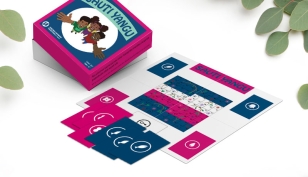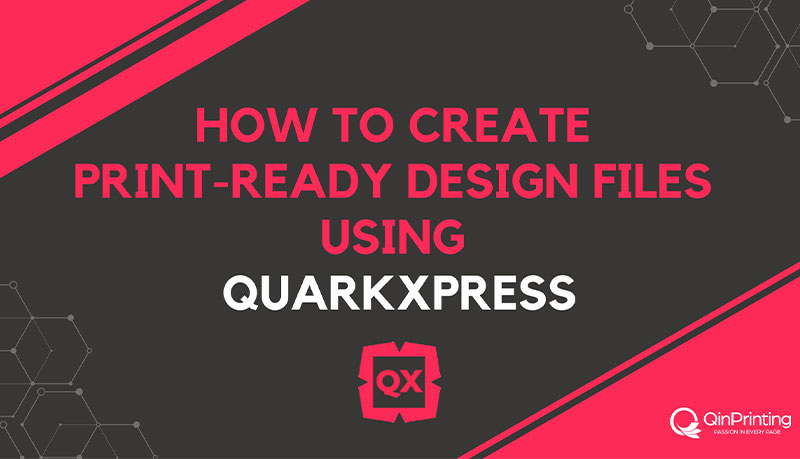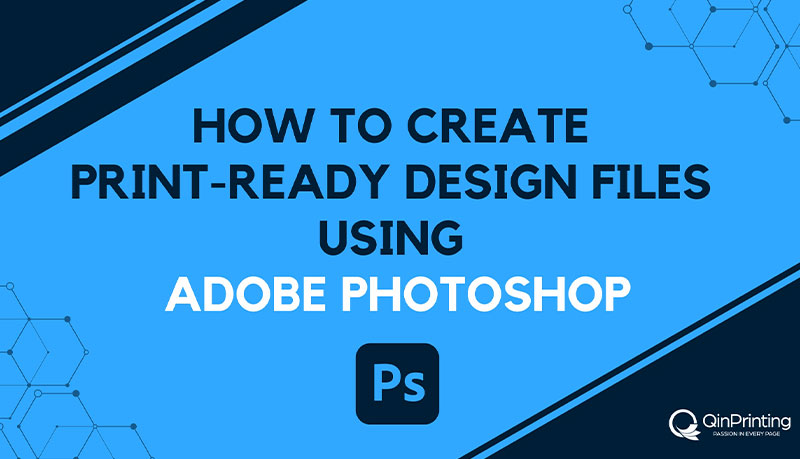Based on decades of experience in the industry, we've picked the 7 questions most often asked by new indie board game designers — and answered them!
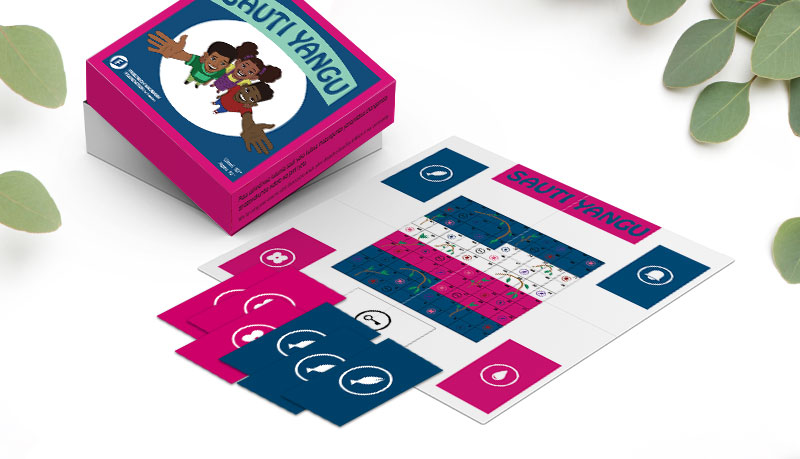
Are you an aspiring tabletop game designer with a head full of ideas and a passion for creating memorable gaming experiences? Embarking on the journey of game design can be exhilarating yet daunting, filled with twists, turns, and a myriad of questions along the way. Fear not, for we're here to provide you with essential answers to some of the most common questions that new independent tabletop game designers often face.
1. How do I design a balanced and engaging game?
Designing a game that strikes the perfect balance between challenge and enjoyment is no easy feat. Start by focusing on core mechanics that are easy to grasp yet offer depth and strategic depth. Playtesting is your best friend here — gather feedback from a diverse group of players and iterate on your design based on their experiences.
To achieve your goals, you must give careful consideration to mechanics, player interaction, and overall experience. Let's explore this with three hypothetical game examples. In other words, we just made this up to illustrate the point!
Mage's Quest
In “Mage's Quest,” players take on the roles of powerful wizards competing to master the arcane arts and claim the title of Grand Mage. The core mechanics involve gathering magical resources, casting spells, and completing quests to earn victory points. To make sure you get a good balance in this game, you'd need to conduct extensive playtesting to fine-tune the power level of spells and the difficulty of quests. By iterating on feedback from playtesters, you could refine your design to create a game that offers a level of strategy while maintaining a fair and engaging experience for all players and using the theme to anchor actions in the imaginary game world.
Galactic Conquest
“Galactic Conquest” is a space-themed strategy game where players lead rival factions in a quest for dominance across the galaxy. The game features a variety of spaceships with unique abilities, planets to conquer, and diplomatic options to forge alliances or betray rivals. To achieve balance, you'd need to look at the interplay between different factions and ship types, making sure that no single strategy dominates the game. Through playtesting, you should be able to identify and address potential balance issues, to create an immersive and competitive experience for your players.
Caverns & Creatures
In “Caverns & Creatures,” players delve into dark dungeons filled with monsters, traps, and treasures in search of fame and fortune. The game combines elements of exploration, combat, and resource management as players navigate perilous caverns and overcome obstacles. For this idea, you'd want to focus on creating a diverse array of challenges that require players to use different abilities and strategies. When playtesting, you want to check that no single approach guarantees success, encouraging players to adapt and collaborate to overcome the dangers lurking in the depths.
By examining these hypothetical game examples you can see how each game idea will suggest different issues and how playtesting helps you find resolutions. But it's also clear that whether you're crafting a magical world of wizards, exploring the depths of space, or braving treacherous dungeons, the principles of balance and engagement remain constant pillars of successful game design.
2. What are the best ways for playtesting my game?
Effective playtesting is key to refining your game. You can start by asking friends and family, but you'll really need less biased opinions if you're serious about game development. So, try your local games night, clubs, conventions, libraries, and other groups to recruit willing testers who don't know you. Establish clear objectives for each playtest session, recruit a variety of playtesters, and encourage honest feedback. Pay close attention to how players interact with your game mechanics and make adjustments accordingly. Here's an example of a questionnaire that you can use to collect valuable insights from playtesters. If you use it, please be fair and add a link back to our website. Thanks!
Playtester Feedback Questionnaire
Thank you for playtesting [Game Name]! Your feedback is invaluable in helping us improve the game. Please take a few moments to share your thoughts and experiences with us.
Player information
- Age:
- Gaming experience level: (Beginner / Intermediate / Experienced)
- How many players were in your playtesting group?
Overall impressions
- On a scale of 1 to 5, how would you rate your overall enjoyment of the game?
- What aspects of the game did you enjoy the most?
- What aspects of the game did you find lacking or in need of improvement?
Game mechanics
- Were the game rules easy to understand?
- Did you encounter any confusion or ambiguity while playing?
- Were there any mechanics that felt overpowered or underutilized?
Gameplay experience
- Did you feel engaged throughout the game?
- Were there any moments of frustration or boredom?
- How well did the game flow from turn to turn?
Player interaction
- How interactive was the game between players?
- Did you feel like your decisions had a meaningful impact on the game outcome?
- Were there opportunities for strategic decision-making and player negotiation?
Balance and fairness
- Did you feel like the game was balanced overall?
- Were there any strategies or game elements that felt unfair or unbalanced?
- Did the game offer a fair chance for all players to win?
Theme and immersion
- How well did the theme of the game resonate with you?
- Did the game evoke a sense of immersion and storytelling?
- Were there any aspects of the theme that could be enhanced or expanded upon?
Suggestions for improvement
- What specific changes or additions would you recommend to improve the game?
- Are there any mechanics, components, or rules that you feel should be removed or modified?
- Do you have any other feedback or suggestions for the game designer?
Closing thoughts
- Any additional comments or insights you'd like to share?
Then just roundup with a paragraph thanking them for their participation and a link to any reward you might have offered as an incentive.
This questionnaire covers various aspects of the playtesting experience, allowing you to gather comprehensive feedback from playtesters and identify areas for improvement in your game design. Feel free to customize the questionnaire based on the specific needs and objectives of your playtesting sessions. You're welcome!
3. How can I protect my game idea and intellectual property?
Protecting your intellectual property is a crucial consideration for tabletop game designers, but it's essential to understand the different forms of protection and when they apply — and when they really don't matter. Let's look at the key points.
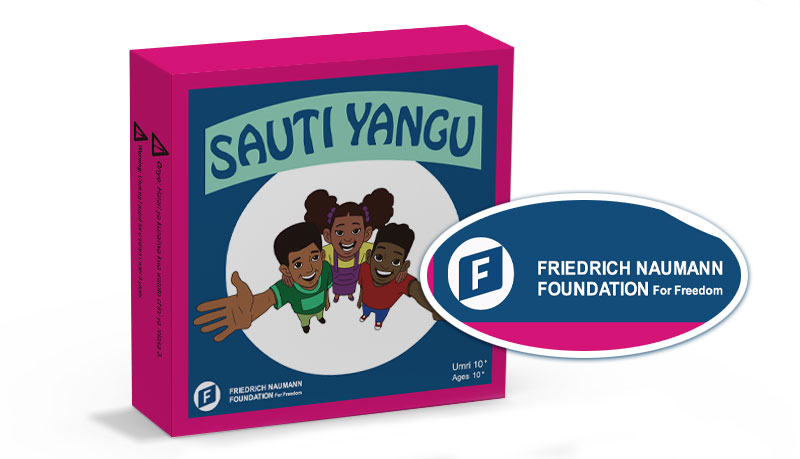
- Copyright protection: One of the most fundamental forms of protection for your game is copyright. Copyright automatically applies to any original work of authorship, including game rules, artwork, and written materials. This means that as soon as you create your game, it is protected by copyright law. You don't need to register your copyright for it to be valid, although doing so can provide additional legal benefits in case of infringement disputes. So, rest assured that your creative ideas are protected from the moment you put them into tangible form.
- Trademark protection: While copyright protects the creative elements of your game, such as its artwork and written content, trademark protection is used to safeguard your game's brand identity, including its name, logo, and any distinctive symbols or slogans associated with it. Trademarks help prevent others from using similar marks that could cause confusion among consumers. While trademark registration is not mandatory, it can provide important legal protections and make it easier to enforce your rights against infringers. Consider trademarking your game's name and logo once you've established a clear brand identity and are preparing for production and marketing.
- Patent protection: In some cases, game designers may also seek patent protection for novel game mechanics or inventions. However, obtaining a patent can be a complex and costly process, and not all game mechanics are eligible for patent protection. It's essential to consult with a qualified intellectual property attorney to determine whether your game mechanics meet the criteria for patentability and whether pursuing a patent is a viable option for your game.
It's important to remember that while legal protections are valuable, they're not a substitute for creativity and innovation. Focus on creating a unique and compelling game experience that resonates with players, and trust that copyright law provides automatic protection for your creative works. As you progress in your game design journey and prepare to bring your game to market, familiarize yourself with trademark and patent considerations, but don't let legal concerns stifle your creative process. Keep creating, keep innovating, and let your passion for game design shine through!
For more depth on these issues, read, Do I Need Copyright, a Trademark, or a Patent for My Custom Board Game?
4. What are the steps to self-publishing a tabletop game?
Self-publishing a tabletop game allows you to bring your ideas to life without relying on traditional publishers. Getting a game past the “gate keepers” of traditional game publishers is notoriously difficult, while some of the most successful games of recent years have been self-published through crowdfunding campaigns on Kickstarter or Gamefound. But self-publishing is not for the faint hearted. While it can be a complex process, breaking it down into manageable steps can make it more achievable. Here's a comprehensive guide to help you answer the question of how to go about self-publishing your game.
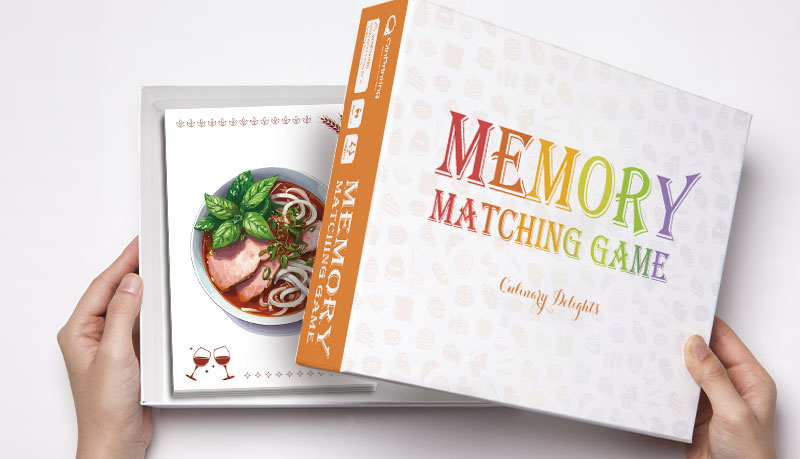
Game design and development
- Finalize your game design: Make sure your game mechanics are well-developed and balanced. Playtest extensively to refine gameplay and eliminate any issues.
- Create a prototype: Develop a high-quality prototype that closely resembles the final product. This will be essential for playtesting and pitching your game to potential backers or manufacturers.
Artwork and graphic design
- Hire artists and designers: Collaborate with skilled artists and graphic designers to create visually appealing game components, including the box cover, cards, board, and rulebook.
- Develop a visual identity: Establish a cohesive visual identity that reflects your game's theme and enhances its appeal. Consistency in art style and design is key.
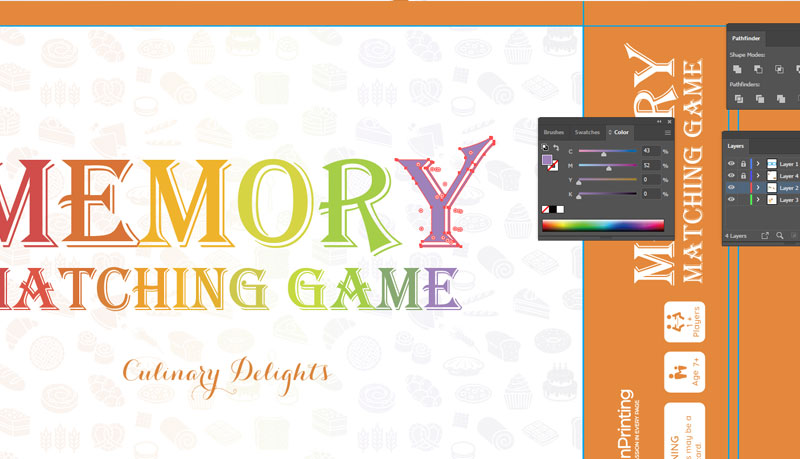
Manufacturing and Production
- Research manufacturers: Identify reliable manufacturers with experience in producing tabletop games. Obtain quotes and compare prices, quality, and production timelines. At QinPrinting, we offer a complete tabletop game production package including design file checking, all components from boards and cards to dice, counters, miniatures and accessories, rulebooks, boxes, inserts, storage and distribution and a special selection of discounts and support if you crowdfund your game through Kickstarter.
- Request samples: Before committing to a manufacturer, request samples of their work to assess the quality of materials and printing. If you're thinking of working with us to complete your tabletop game, get in touch to ask us about samples; we can show you what we're capable of with digital samples, videos and photos of completed projects.
- Finalize specifications: Clearly define the specifications for your game components, including materials, dimensions, colors, and quantities. Provide the manufacturer with detailed files and instructions. At Qinprinting, we've been working with mainstream companies and independent creatives alike for almost 30 years. When you work with us, you'll get a named consultant, access to our team of experts, customized templates and file checking as standard. Without boasting, we really are the best! Check out how we work and what sets us apart here: Custom Board Game Manufacturing.
Logistics and fulfilment
- Plan for shipping: Research shipping options and costs, both domestically and internationally. Consider fulfillment services that can handle packaging and shipping for you. We offer this advice as a general principle, but all this is part of the service we offer if you work with us — packing, composition and loading, shipping or split-shipping, and distribution — so we'll handle all of this and leave you to get creative and market your game.
- Calculate costs: Factor in shipping costs, taxes, and customs duties when determining your overall budget. Make sure you have a plan for covering these expenses. We can help you do this, no problem. It's not as complex as you might think.
Building a community and marketing
- Create a website and social media presence: Establish an online presence for your game. Create a website with detailed information about the game, and use social media to engage with potential players and build a community. YouTube and Instagram are good platforms often favored by game designers. And don't forget Reddit, where you can plug in to a lively community of gamers around the world.
- Generate buzz: Share regular updates, behind-the-scenes content, and sneak peeks to generate excitement. Use email newsletters, blog posts, and forums to reach a wider audience.
- Attend conventions and events: Showcase your game at gaming conventions, local game stores, and events. Running demo sessions can help you gather feedback and build a fanbase.
Crowdfunding Campaign
- Prepare for launch: If you choose to use crowdfunding platforms like Kickstarter, make sure you have a well-prepared campaign. This includes a compelling video, high-quality images, a detailed description, and attractive reward tiers.
- Engage backers: Communicate regularly with backers during the campaign, addressing their questions and feedback. Transparency and responsiveness can build trust and support.
For an in-depth explanation of how to run a successful crowdfunding campaign for your tabletop game, read, How to Launch a Game on Kickstarter.
Post-campaign management
- Production and quality control: Once your campaign is funded, proceed with production. Maintain close communication with your manufacturer to monitor progress and address any issues promptly. If you work with us, we'll assign you a named consultant who you can contact at any time with questions or to ask for help, advice, and updates. They'll also be proactive, contacting you by your preferred means to let you know how we're getting on with the production process.
- Fulfillment: Coordinate with your fulfillment service to guarantee timely and accurate delivery of rewards to your backers. Keep backers informed of shipping timelines and any potential delays.
Ongoing marketing and sales
- Launch a web store: Set up an online store to sell your game post-campaign. Platforms like Shopify or your own website can facilitate sales and distribution.
- Engage with the community: Continue to engage with your community through social media, newsletters, and events. Collect feedback for potential expansions or future projects.
- Expand your reach: Consider partnering with distributors to get your game into retail stores and online marketplaces. Attend trade shows and conventions to network with retailers and distributors.
Legal and business considerations
- Register your business: Depending on your location and business structure, you may need to register your business and obtain the necessary licenses.
- Understand taxes: Familiarize yourself with tax obligations related to sales, especially if you're shipping internationally. Consider consulting a tax professional.
- Protect your IP: Make sure your intellectual property is protected. While copyright is automatic, consider trademarking your game's name and logo as your brand grows.
By following these steps and dedicating attention to each phase of the self-publishing process, you can successfully bring your tabletop game to market. Self-publishing offers the creative freedom to fully realize your ambitions and connect directly with your audience. With careful planning and execution, your game can find its place on tables around the world.
5. How do I run a successful crowdfunding campaign?
Running a successful crowdfunding campaign can provide the financial support needed to turn your game into reality. Here are some key steps and tips to help make sure your campaign is a success.
Planning and preparation
- Research successful campaigns: Study successful crowdfunding campaigns for tabletop games to understand what worked well. Look at their campaign pages, videos, funding goals, stretch goals, and how they engaged with backers.
- Set clear goals: Determine your funding goal based on a detailed budget that includes production costs, shipping, marketing, and contingencies. Be realistic and transparent about what you need to bring your game to life.
- Create a compelling story: Craft a narrative around your game that highlights its unique features, the passion behind its creation, and why people will enjoy playing it. Your story should resonate with potential backers and make them feel invested in your project.
Crafting the campaign page
- High-quality visuals: Use high-quality images and artwork to showcase your game. Include pictures of game components, prototype images, and concept art to give backers a clear idea of what they're supporting.
- Engaging video: Create a captivating video that explains your game, its mechanics, and why it's exciting. Keep it concise, energetic, and visually appealing. A good video can significantly increase engagement.
- Detailed description: Provide a thorough description of your game, including gameplay mechanics, components, player count, and estimated playtime. Use diagrams and examples to illustrate complex mechanics.
- Reward tiers and stretch goals: Design reward tiers that offer good value and appeal to different types of backers. Consider including exclusive items for early backers or limited editions. Outline stretch goals to incentivize further funding and keep the momentum going.
Marketing and promotion
- Build an audience early: Start building an audience before launching your campaign. Use social media, gaming forums, and mailing lists to generate interest and gather potential backers. Engage with your audience by sharing development updates, sneak peeks, and behind-the-scenes content.
- Leverage social media: Utilize social media platforms to promote your campaign. Create a content calendar with regular updates, including countdowns to the launch, milestones, and backer highlights. Use relevant hashtags and engage with the tabletop gaming community.
- Collaborate with influencers: Reach out to board game reviewers, bloggers, and YouTubers to review your game or promote your campaign. Influencer endorsements can significantly boost your campaign's visibility and credibility.
- Attend conventions and events: Showcase your game at conventions, gaming events, and local game stores. Running demo sessions and interacting with potential backers in person can generate excitement and build a loyal following.
Engaging with Backers
- Communicate regularly: Keep your backers informed with regular updates on the campaign's progress, production milestones, and any challenges you encounter. Transparency builds trust and keeps backers engaged.
- Respond to feedback: Actively monitor comments and messages from backers. Respond promptly to questions, concerns, and feedback. Showing that you value their input can foster a strong sense of community and support.
- Express gratitude: Show appreciation for your backers' support. Personalize thank-you messages, acknowledge top contributors, and create special rewards or shout-outs for dedicated backers.
Managing the campaign post-funding
- Stay organized: Use project management tools to keep track of production schedules, shipping logistics, and communication with manufacturers. Staying organized ensures that you meet your promised timelines.
- Deliver on promises: Fulfil your campaign promises by delivering rewards on time and maintaining the quality you assured. If unexpected delays occur, communicate openly with your backers and provide updated timelines.
- Maintain engagement: Keep engaging with your backers even after the campaign ends. Share updates on future projects, expansions, and invite them to join your community for ongoing support and feedback.
By dedicating time and effort to each aspect of your crowdfunding campaign, you'll be well-positioned to achieve your funding goals and bring your tabletop game to life. Remember, preparation, transparency, and community engagement are the keys to a successful campaign. To find out more, read, How to Crowdfund a Board Game.
6. How do I price my game effectively?
Pricing your tabletop game effectively is crucial for attracting customers, covering your costs, and making a profit. You can get an idea of how much it might cost to manufacture your game by checking out How to Get the Best Custom Board Game Prices. Next we'll look at the key factors and steps to consider when determining the right price to ask your customers for your game.
Understand your costs
- Production costs: Calculate the total cost of producing your game, including manufacturing, packaging, artwork, and design. Work with us to make sure you're getting the best price for quality.
- Shipping and fulfillment: Factor in the costs of shipping the game to backers or retail stores, as well as any fulfillment service fees. Consider both domestic and international shipping costs.
- Marketing and distribution: Include the expenses related to marketing your game, such as advertising, attending conventions, and promotional materials (which we can print for you, just ask). If you plan to use third-party distributors, account for their fees as well.
Market research
- Analyze competitors: Look at similar games in the market and their price points. This will give you an idea of what customers are willing to pay and help you position your game competitively.
- Target audience: Understand the spending habits and expectations of your target audience. For instance, hardcore board gamers might be willing to pay more for a highly detailed, strategic game, while casual gamers might prefer something more affordable.
Value proposition
- Unique selling points: Highlight what makes your game unique and why it stands out from others. Unique mechanics, high-quality components, and engaging artwork can justify a higher price.
- Perceived value: Make sure that the perceived value of your game matches its price. High-quality materials, professional artwork, and a polished presentation can increase the perceived value and justify a higher price point.
Pricing models
- Retail price: Determine the manufacturer's suggested retail price (MSRP) of your game. A common formula is to set the MSRP at 5 to 6 times the manufacturing cost to cover all expenses and guarantee a profit margin.
- Wholesale price: If you plan to sell through distributors or retail stores, set a wholesale price, typically 40–50% of the MSRP. This allows retailers to make a profit while still pricing the game attractively for consumers.
- Crowdfunding pricing: For crowdfunding campaigns, offer multiple pledge levels. Include early bird discounts, standard copies, deluxe editions, and bundles. Make sure the pricing structure encourages higher pledges while offering good value at each level.
Testing and feedback
- Playtesting feedback: Use playtesting sessions to gather feedback not only on gameplay but also on perceived value. Ask playtesters what they would be willing to pay for the game based on their experience.
- Surveys and polls: Conduct surveys or polls within your target audience to gauge their willingness to pay. Use social media, gaming forums, and email lists to reach potential customers.
Adjusting prices post-launch
- Monitor sales data: After launching your game, closely monitor sales data and customer feedback. If the game is selling well at your initial price, it confirms that your pricing strategy is effective.
- Be flexible: Be prepared to adjust your pricing if necessary. If sales are slower than expected, consider running promotions or offering discounts to boost interest. Conversely, if demand is high, make sure you can meet it without compromising quality.
Psychological pricing strategies
- Charm pricing: Use psychological pricing techniques such as setting the price at $49.99 instead of $50.00. This small difference can make the price seem more attractive to consumers who will see it as a little over 40 bucks rather than almost 50 bucks.
- Bundle offers: Create bundle offers that provide additional value, such as including expansions or accessories at a discounted rate when purchased together with the base game.
International pricing
- Currency conversion: If you're selling internationally, consider the impact of currency conversion and local purchasing power. Adjust prices accordingly to make your game competitively priced in different regions.
- Shipping and duties: Factor in international shipping costs and customs duties, and be transparent with international backers about these additional costs.
With thorough planning and well-developed pricing strategies, you can effectively situate your tabletop game in the market to attract customers, cover your costs, and achieve a healthy profit margin. Pricing is a critical aspect of your game's success, so take the time to analyze and refine your approach to make sure it aligns with your overall business goals.
7. How do I get my game into retail stores?
While your first effective sales will probably come through your crowdfunding campaign and subsequent direct purchases via your owned web properties, getting your game into retail stores is a significant milestone that can increase your game's visibility and sales. Here are the steps and strategies we've seen work best to help you achieve this goal.
Prepare your game for retail
- Professional packaging: Make sure your game has professional, attractive packaging that stands out on store shelves. High-quality box design, clear labeling, and appealing artwork are crucial.
- Barcodes and ISBNs: Obtain a UPC barcode for your game box. This is essential for retail inventory systems. If your game includes a book or manual, consider getting an ISBN for it as well. To get a UPC (Universal Product Code) or ISBN (International Standard Book Number) and a barcode for your tabletop game, start by registering with GS1 US, the official organization for assigning UPCs in the United States. Apply for a company prefix, which is a unique identifier for your company, and generate individual UPCs for each product variation. You can then create the barcode image using GS1 US's tools or other barcode generation software. If your game includes a book or significant printed material, you might also need an ISBN. Register with a local ISBN agency, such as Bowker, in the United States, and purchase ISBNs in blocks. Assign an ISBN to your game's printed component and generate the corresponding barcode using Bowker's tools or other barcode generation software. Make sure the barcodes are of high quality and test them with a scanner to verify their functionality.
Create a sales sheet
- Comprehensive information: Develop a one-page sales sheet that includes all essential information about your game: title, theme, target audience, player count, playtime, and components. Highlight unique selling points and key features.
- Pricing details: Include MSRP (Manufacturer's Suggested Retail Price), wholesale price, and minimum order quantities (MOQs). Make sure your pricing structure allows retailers to make a reasonable profit margin.
- Contact information: Provide clear contact information, including your name, company name, email, phone number, and website.
Build relationships with retailers
- Local game stores: Start by approaching local game stores. Visit them in person if possible, introduce yourself, and present your game. Offer to run demo sessions or leave a demo copy for them to try.
- Retailer networks: Join retailer networks and associations, such as the Game Manufacturer's Association (GAMA), the Indie Game Alliance, and the Independent Game Developers Association (IGDA). These networks can provide valuable contacts and opportunities to showcase your game.
Attend trade shows and conventions
- Industry events: Attend industry trade shows and conventions, such as Gen Con, Origins Game Fair, and Spiel Essen. These events are excellent opportunities to showcase your game to retailers, distributors, and publishers.
- Exhibit your game: If budget allows, set up a booth to exhibit your game. Engage with attendees, offer demos, and distribute your sales sheet. Networking at these events can lead to valuable connections and opportunities.
Work with Distributors
- Identify distributors: Research and identify game distributors who can help get your game into retail stores. Distributors like Alliance Game Distributors, ACD Distribution, and PSI (Publisher Services Inc.) have established relationships with retailers.
- Submit your game: Reach out to distributors with a professional pitch, including your sales sheet, a demo copy, and any relevant information about your game's success and reception. Highlight any positive reviews or awards.
- Negotiation: Be prepared to negotiate terms with distributors, including pricing, minimum order quantities, and exclusivity agreements. But make sure that the terms are favorable and sustainable for your business.
Online retail platforms
- Amazon and other marketplaces: Consider listing your game on online retail platforms like Amazon, eBay, and Walmart. These platforms can increase your game's reach and provide additional sales channels.
- Specialty online stores: Target specialty online stores that focus on board games and tabletop games. Websites like CoolStuffInc, Miniature Market, and Noble Knight Games are popular among board game enthusiasts.
Marketing and promotion
- Create buzz: Generate buzz around your game through social media, gaming forums, and email newsletters. Positive word-of-mouth and strong online presence can make your game more attractive to retailers.
- Influencer reviews: Send copies of your game to board game reviewers, bloggers, and YouTubers. Positive reviews and playthroughs can boost your game's credibility and demand.
- Press releases: Issue press releases at gaming news sites and magazines announcing your game's availability in retail stores. Highlight any unique features, awards, or positive reviews.
Support retailers
- Demo copies and in-store events: Provide retailers with demo copies of your game and offer to run in-store demo events. Engaging directly with customers can drive sales and create a loyal customer base.
- Point-of-sale materials: Supply retailers with point-of-sale materials, such as posters, flyers, and standees, to help promote your game in-store. These materials can increase visibility and attract customers. Obviously, if you manufacture your game with us, we can help you with all your promotional and marketing materials needs.
Monitor and adjust
- Track sales data: Regularly monitor sales data and gather feedback from retailers. Understanding how your game is performing can help you make necessary adjustments in production, pricing, or marketing strategies.
- Continuous engagement: Maintain ongoing relationships with retailers and distributors. Keep them updated on new releases, expansions, and restock availability. Continuous engagement can lead to repeat business and long-term success.
By maintaining a professional and proactive approach, you can successfully get your tabletop game into retail stores. Building relationships with retailers, leveraging trade shows, and using distributors are key strategies that can help expand your game's reach and help guarantee its success in the market.
Talk to us — we're here to help you!
The journey of creating and publishing your tabletop game is an exciting and rewarding adventure. With careful planning, dedicated effort, and a passion for your project, you can bring your game from concept to reality and share it with the world. At QinPrinting, we understand the challenges and triumphs that game designers face, and we're here to support you every step of the way. Our complete tabletop game manufacturing solution guarantees high-quality production, while our crowdfunding campaign support package helps you with funding your project by offering you discounts and coupons for your Kickstarter campaign. Ready to turn your game idea into a successful product? Contact us today to find out how we can help you develop and realize your vision, and bring your game to players everywhere!
Shoot us an email to [email protected] or call us at +1 951 866 3971 and we'll be delighted to discuss your needs.





